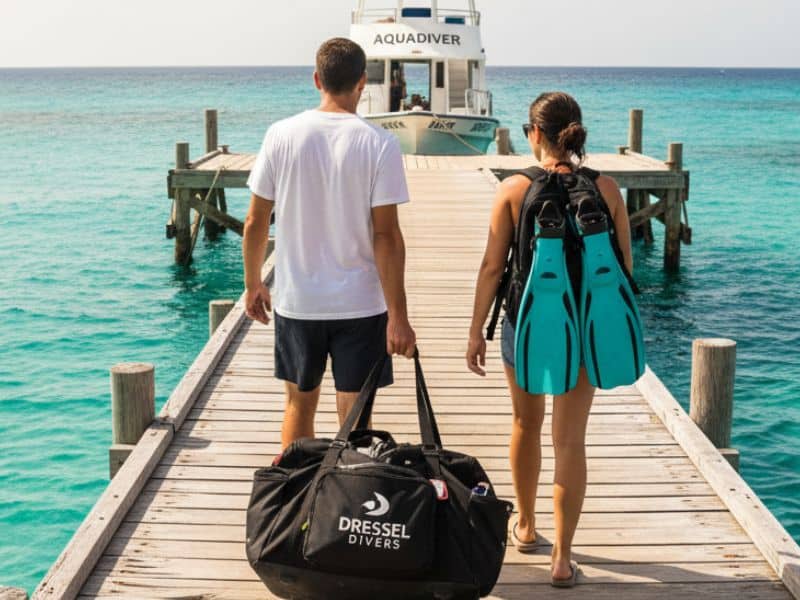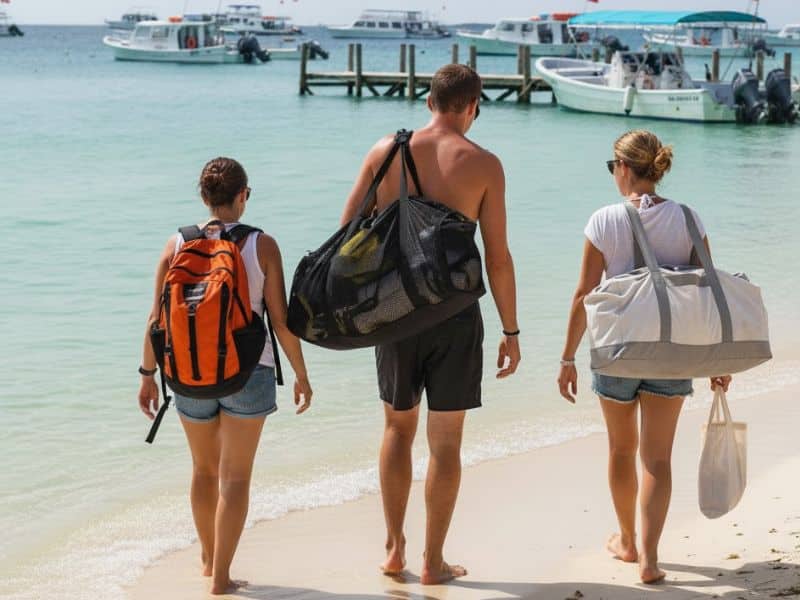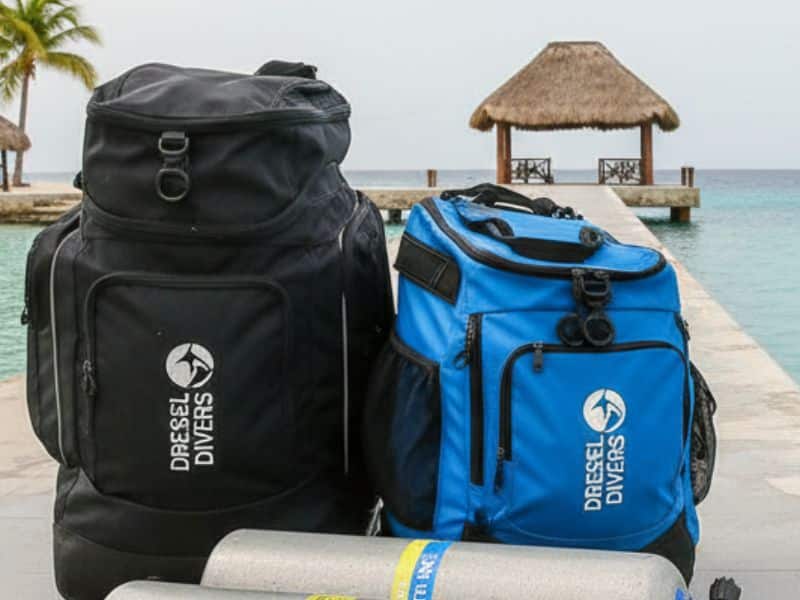1. Types of Dive Travel Bags and Mesh Diving Bags: Which One Should You Choose for Your Dive Trip?
Choosing the right type of dive travel bag or mesh dive bag depends on your destination, dive type, gear volume, and how you plan to travel. Each model is built for a specific kind of trip and diving environment.
1.1. Duffel Bags and Mesh Dive Bags
Duffel bags stand out for their versatility and roomy design. They’re the classic choice for carrying your full dive setup in one spacious compartment, easy to load into cars, boats, or dive shop storage areas.
Advantages: simple layout, great capacity, no mechanical parts, and budget-friendly pricing.
Many models include wheels, reinforced structures, and multiple pockets to customize storage.
Material: durable, water-repellent nylon built to handle humidity and abrasion.
Mesh dive bags are the perfect companion for wet gear such as wetsuits, fins, and snorkels. Made of lightweight, breathable mesh, they let your equipment dry while you travel, keeping it odor- and mildew-free.
Advantages: total drainage, ultra-lightweight, ideal for quick transfers between boats and dive centers.
They fold easily for compact storage, even inside your main dive travel bag. Perfect for frequent divers, dive courses, or any trip where fast cleaning and drying are key.
Pairing a mesh dive bag with a sturdy dive travel bag is strategic, it maximizes both protection and ventilation. You can store your wet gear inside the mesh bag and place it within your main dive travel bag, keeping the rest of your contents dry and odor-free.
1.2. Roller Bags: Dive Bags with Wheels
Roller bags (or dive bags with wheels) are designed for the traveling diver, especially for airports, stations, and long transfers.
Advantages: internal organization with compartments and straps, effortless handling even when loaded.
They’re built tough, often with ballistic fabric, corrosion-resistant zippers, and impact protection. Many include external mesh sections for separating wet gear and promoting ventilation.
The rigid structure and internal reinforcements safeguard sensitive items like dive computers, cameras, and regulators.
A top choice for long expeditions, liveaboards, and international trips, where you need to carry plenty of gear while keeping mobility and safety in check.
1.3. Dry Bags and Waterproof Bags
A dry bag is a must-have if you’re traveling by zodiac, kayak, or small boat, or heading somewhere humid. It keeps electronics, paperwork, and dry clothes safe even in rough weather or splashing waves.
Advantages: roll-top closure for watertight sealing and complete waterproof protection.
Material: reinforced PVC or TPU with heat-sealed seams and waterproof inner pockets.
Waterproof bags, on the other hand, protect from splashes, rain, and humidity but aren’t usually meant for full submersion. They typically come with sealed zippers, Velcro, and clips. Perfect for urban transfers or dive shops where full immersion isn’t a concern.
They’re versatile enough for diving, travel, and outdoor sports alike. The key difference lies in the closure: dry bags have roll-top clips for full waterproofing, while waterproof bags offer lighter protection with various closure styles and resistance levels.
1.4. Dive Backpacks
Scuba dive backpacks are the all-terrain option for divers exploring destinations that require walking across beaches, rocks, or long coastal paths.
Advantages: even weight distribution on your back, hands-free movement for carrying tanks or extra luggage.
Premium models feature padded straps, mesh pockets for wet gear, and hidden compartments for sensitive items. Some can even convert into trolleys or include built-in mesh sections for ventilation.
They’re perfect for land-based dive trips, multi-destination expeditions, and anyone prioritizing mobility over absolute capacity.
1.5. Comparison Table: Dive Travel Bag Types
| Bag Type |
Best Use |
Main Advantages |
Limitations |
Common Materials |
Key Features |
| Duffel Bag |
General transport |
Large capacity, durable, simple |
Limited organization, no wheels |
Ballistic nylon, polyester |
Reinforced handles, compartments |
| Mesh Dive Bag |
Wet gear/transfers |
Full drainage, lightweight, foldable |
Low external protection |
Synthetic mesh |
Extra pockets |
| Roller Bag (with wheels) |
Airport/long travel |
Easy mobility, solid protection, organized storage |
Heavier, more expensive |
Reinforced nylon/polyester |
Telescopic handle, dual wheels |
| Dry Bag |
Electronics/dry clothes |
100% waterproof, roll-top closure |
Limited capacity, less comfort |
PVC/TPU heat-sealed |
Roll-top seal, shoulder strap |
| Waterproof Bag |
Urban transfers |
Splash/rain protection, versatile |
Not fully waterproof when submerged |
Nylon/PVC |
Sealed zippers, multi-pocket design |
| Dive Backpack |
On-foot expeditions |
Hands-free, balanced weight, versatile |
Less capacity than roller bags |
Nylon/polyester, mesh |
Padded straps, mesh compartments |










